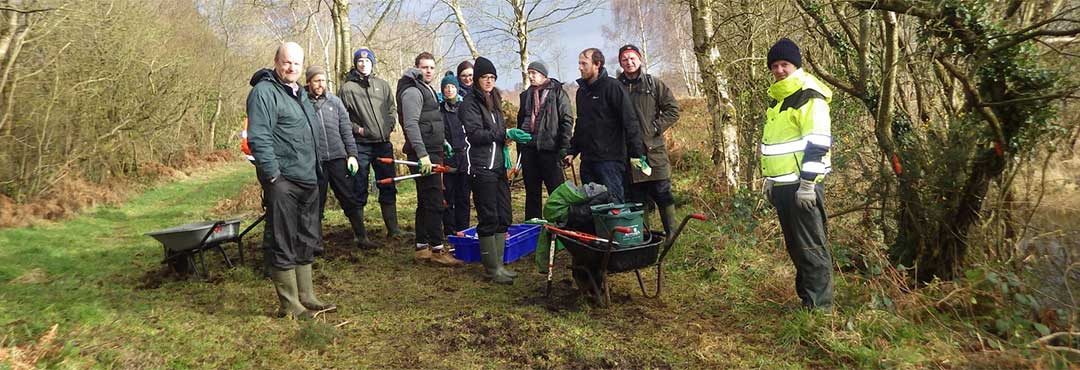The blanket bog is a globally endangered peatland habitat which forms in a wet, cool, oceanic climate and is one of the most extensive semi-natural habitats in the UK and Ireland. In fact, Ireland is home to 8% of the worlds blanket bog.
Blanket Bog is a wet, spongy, peat-forming habitat – low in nutrition, but high in diversity, supporting a wide variety of invertibrates, and a reasonable variety of bird life. It is not a major habitat for mammals, although the irish hare, foxes and the pigmy shrew can occasionally be found here.
Historical info about Blanket Bog
There is evidence to suggest that blanket bog began to form in Ireland some 5000 Years ago. Heavy prolonged rain washed the iron in the soil down to form a waterproof layer (called the iron pan). This layer prevented the rainwater from running freely through the soil, making it waterlogged and eventually turning into blanket bog as the layers of vegetation partially decomposed over thousands of years.
Species living in and around Blanket Bog
Blanket bogs support a wide range of land and water animals, insects and birds. Some of these are common, while others are restricted to particular local areas. Invertibrates common to bogland include mayfly and stonefly larvae as well as dragonfly and damselfly larvae. Whirligig beetles, pondskaters and water boatmen can be seen on the surface of the ponds.
In ideal bogland conditions there are little or no trees, meaning birdlife is usually restricted to ground nesting species such as, grouse, meadow pipit, skylark, curlew, snipe and golden plover. Birds of prey are also found here, usually merlin, hen harrier and kestral.
Yellow Marsh Saxifrage (Saxifraga hirculus), Whorl Snail (Vertigo geyeri) and the Honey Fungus (Armillaria ectypa) can also be seen.
Threats to Blanket Bog
For centuries the blanket bog remained largely intact due to generations of traditional land management. In more recent times significant areas have been seriously damaged.
Threats include:
- Clearance – To expose underlying mineral soil and create grazing land.
- Peat cutting for fuel.
- Drainage – Which reduces water level and eventually dries the bog out for agricultural improvement of the land.
- Erosion – Removal of the protective layer can cause deep breaks in the peat cover leaving it vulnerable to erosion. It can also be caused by drainage, over burning, “all terrain”-vehicles and other recreational useage.
- Forestation – before bogland was recognised as an important habitat people viewed it as wasteland, and introduced trees to some of the areas, especially Sitka Spruce, a tree which can grow in wet peat. This meant the area had to be drained which completely changed the habitat from treeless wet bogland into dry forested habitat.

